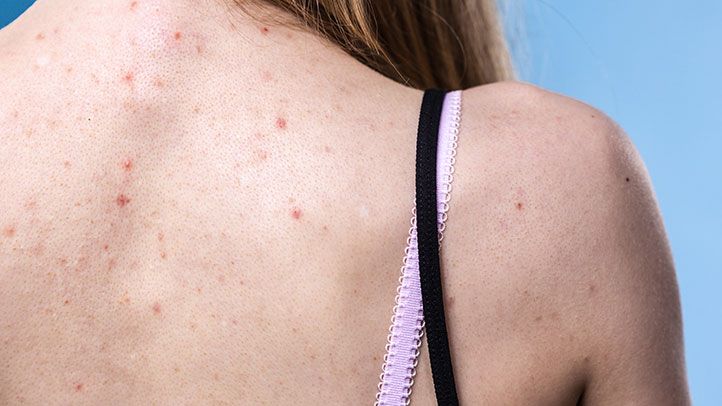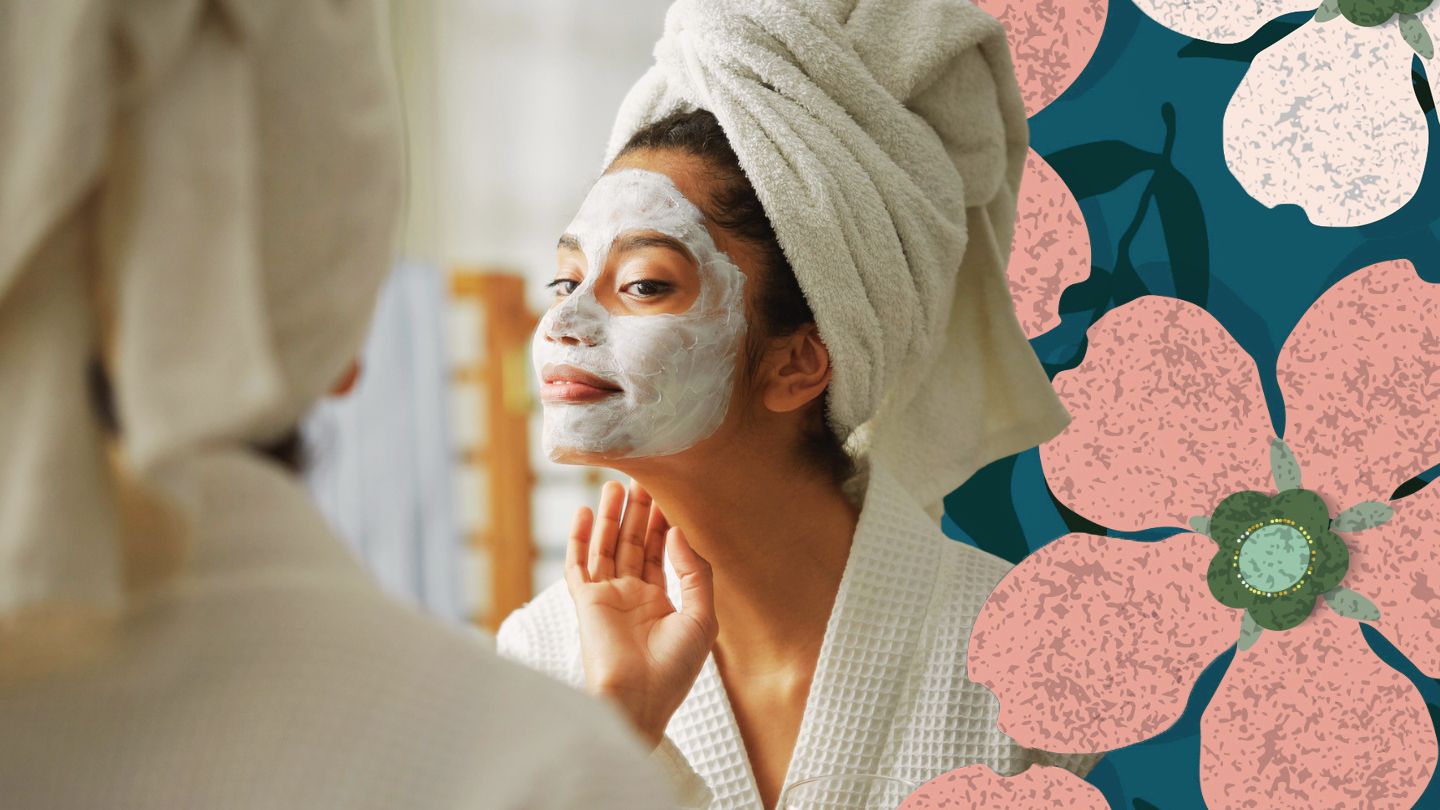Understanding Fungal Acne
Fungal acne is caused by a type of yeast called Malassezia, which naturally lives on the skin. However, when this yeast overgrows, it can clog pores and cause inflammation, leading to acne-like bumps and blemishes. These breakouts often appear as clusters of small, itchy, and red bumps, and can be quite stubborn and resistant to traditional acne treatments.
Risk Factors and Causes
Several factors can contribute to the development of fungal acne, including:
- Humidity and sweat: Warm, humid environments and excessive sweating can create an ideal breeding ground for yeast overgrowth.
- Oily skin: Individuals with naturally oily skin may be more susceptible to fungal acne.
- Compromised immune system: People with weakened immune systems may have a harder time controlling the growth of yeast on the skin.
- Certain medications: Some medications, such as antibiotics, can disrupt the balance of microorganisms on the skin, leading to fungal overgrowth.
The Importance of a Fungal Acne Face Wash
When dealing with fungal acne, using a specialized fungal acne face wash is crucial. Regular acne cleansers may not be effective in controlling the yeast overgrowth, as they are designed to target bacteria rather than fungi.
Ingredients to Look for in a Fungal Acne Face Wash
When choosing a fungal acne face wash, look for products that contain one or more of these key ingredients:
- Ketoconazole: An antifungal medication that helps control the growth of yeast on the skin.
- Selenium sulfide: A potent antifungal agent that can help reduce inflammation and clear up fungal acne.
- Zinc pyrithione: A topical antifungal and antibacterial agent that can help fight both fungal and bacterial acne.
- Tea tree oil: A natural ingredient with antifungal and anti-inflammatory properties that can help calm fungal breakouts.
Using a Fungal Acne Face Wash Effectively
To get the most out of your fungal acne face wash, follow these guidelines:
Cleansing Technique
Gently massage the face wash onto damp skin, focusing on affected areas. Avoid scrubbing too vigorously, as this can further irritate the skin. Rinse thoroughly with lukewarm water and pat dry.
Consistency and Patience
Fungal acne can take time to clear up, so consistency is key. Use your fungal acne face wash as directed, typically once or twice daily, and be patient. It may take several weeks to see significant improvement.
Complementary Treatments
In addition to using a fungal acne face wash, consider incorporating other treatments to support your skin's healing process, such as:
- Topical antifungal creams or gels: These can be applied directly to affected areas to target fungal overgrowth.
- Oral antifungal medications: In severe cases, your dermatologist may prescribe oral antifungal medication to help control fungal growth from within.
- Lifestyle changes: Reducing sweat, humidity, and oil production through diet, exercise, and stress management can help prevent future fungal acne breakouts.
Maintaining Clear Skin After Fungal Acne Treatment
Once you've successfully treated your fungal acne breakout, it's important to take steps to prevent future occurrences. Here are some tips for maintaining clear, healthy skin:
Continued Use of Antifungal Products
Even after your breakout has cleared, consider using a gentle antifungal face wash or toner a few times a week to keep yeast growth in check.
Skin Care Routine Adjustments
Evaluate your skin care routine and make adjustments as needed. Opt for oil-free, non-comedogenic products that won't clog pores or encourage yeast overgrowth.
Lifestyle Modifications
Maintain a healthy lifestyle by staying hydrated, managing stress, and exercising regularly to promote balanced skin health.
Seeking Professional Guidance
If you're struggling to clear up fungal acne on your own, don't hesitate to seek the expertise of a dermatologist. They can provide a proper diagnosis, recommend effective treatment options, and help you develop a comprehensive plan to achieve and maintain clear, healthy skin.
FAQs
What is fungal acne?
Fungal acne, also known as pityrosporum folliculitis or malassezia folliculitis, is a type of acne caused by an overgrowth of yeast on the skin. Unlike regular acne, which is caused by bacteria, fungal acne requires a different approach to treatment.
How is fungal acne different from regular acne?
Fungal acne is caused by an overgrowth of yeast, specifically the Malassezia species, while regular acne is primarily caused by bacteria. Fungal acne breakouts often appear as clusters of small, itchy, and red bumps, and can be quite stubborn and resistant to traditional acne treatments.
What should I look for in a fungal acne face wash?
When choosing a fungal acne face wash, look for products that contain one or more of these key ingredients: ketoconazole, selenium sulfide, zinc pyrithione, or tea tree oil. These ingredients have antifungal properties that can help control the growth of yeast on the skin.
How long does it take to see results from a fungal acne face wash?
Fungal acne can take time to clear up, so consistency and patience are key. Use your fungal acne face wash as directed, typically once or twice daily, and be patient. It may take several weeks to see significant improvement.
What other treatments can complement a fungal acne face wash?
In addition to using a fungal acne face wash, consider incorporating other treatments to support your skin's healing process, such as topical antifungal creams or gels, oral antifungal medications (in severe cases), and lifestyle changes to reduce sweat, humidity, and oil production.
Disclaimer: This article is for informational purposes only and does not constitute medical advice. Always consult with a healthcare professional before starting any new treatment regimen.
Related Coverage
Trade refined white buns for nutritious whole wheat or low carb burger bun alternatives like lettuce, mushroom caps, nut/seed buns, cheese, coconut flour buns, or protein buns....
Unopened fish food lasts 9-24 months. Flakes expire fastest in 2-3 months after opening. Store in airtight, cool containers. Discard if foul odor, pests, or texture changes....
Bacne or back acne often responds well to over-the-counter washes, but severe cases may need prescription medications, professional extractions, lasers, peels, and microneedling to clear skin and minimize scarring....
Piedmont Dermatology & Plastic Surgery provides exceptional medical dermatology, cosmetic dermatology, plastic surgery, and aesthetic services to patients in North Carolina....
Making out can cause acne breakouts by transferring oils, bacteria, and irritants between partners' faces. Learn expert tips to prevent pimples from kissing....
If your acne is painfully itchy, inflammation and bacteria trapped in clogged pores may be to blame. Discover ways to treat irritation and prevent future breakouts....
Spironolactone acne treatment poses pregnancy risks if taken while trying to conceive. But stopping the drug 1+ months before conception allows it to clear your system....
Does fasting cause acne breakouts? Intermittent fasting may impact hormones and lead to more pimples. Get tips to prevent acne flares during fasting....
Discover dermatologist tips for an acne-fighting skincare routine. Learn the best moisturizer ingredients to clear, hydrate and protect teenage skin....
Inner thigh acne can be cleared up with the right skincare ingredients like salicylic acid and benzoyl peroxide. Learn expert tips to prevent thigh pimples and bumps....






